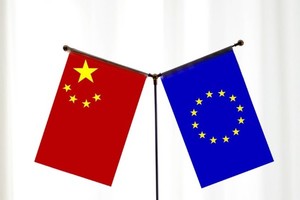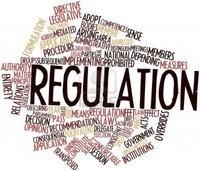China was significantly behind the European Union (EU) in starting to approve biosimilars/copy biologicals. However, despite the small number of copy biologicals approved in the country, China has been much faster to commercialize such products [1].
According to Dr Jenny Hao, there is three pathways for Chinese pharmaceutical companies to enter EU markets, but all require early planning and expertise for the European markets [2], and each pathway has its pros and cons:
1. Out-licensing
– Simple, low cost and low risk approach
– Commercial value not optimized
– Need a suitable European licensing and/or commercial partner
2. Joint venture (JV)
– Jointly fund, develop and commercialize
– Build up a portfolio and grow the JV valuation
3. Own EU subsidiary
– Larger investment, both upfront and long-term
– Maintain control and long-term value of the assets
– Need to build up capabilities and navigate various healthcare systems
The Chinese pharmaceutical companies may adopt different commercialization approaches, see Table 1, taking into consideration that each of them has different needs based on their chosen strategies.
| Table 1: Commercialization approaches of Chinese pharmaceutical companies
|
| Focus on China market
|
Planned for international markets
|
Build own EU operations
|
– Clinical trials only included Chinese patients
– Additional EU study is required, a bridging study at a minimum
– EU licensing partner has to conduct additional trials
|
– Clinical studies considered requirements for US and EU registration
– No need for additional clinical development, self-apply for EMA approval
– Only need an EU commercial partner
|
– Set up EU headquarters and employ own teams
– Often seek commercial partner to launch products
|
| EMA: European Medicines Agency; EU: European Union.
|
Since the launch of the guidance for approval of copy biologicals in February 2015,
China has approved four copy biologicals (Anjianning [adalimumab], Ankeda [bevacizumab], Hanlikon [rituximab] and Qletli [adalimumab]), the first of which was Hanlikon (rituximab) in February 2019 [3].
Between 2013 and 2017 the market for biologicals in China almost tripled. The Chinese market for copy biologicals is expected to have an incredible growth over the next five to 10 years and reach RMB 33 billion by 2025, partly driven by adalimumab, bevacizumab, etanercept and trastuzumab, each with biosimilar sales above RMB 4 billion. By 2030, the market is expected to expand to RMB 49 billion [4].
Related articles
China–EU market expansion for biosimilars
Challenges for Chinese companies to bring biosimilars (copy biologicals) to EU
Chinese biosimilars (copy biological) in European markets
The state of play for copy biologicals in China
First Chinese biologicals maker receives EMA GMP certification
| LATIN AMERICAN FORUM The new section of the ‘Latin American Forum’ on GaBI has been launched. The objective of this new section is to provide you with all the latest news and updates on developments of generic and biosimilar medicines in Latin America in Spanish. View last week’s headline article: Nomenclatura de biológicos y biosimilares en Chile Browse the news in the Latin American Forum! Register to receive the GaBI Latin American Forum newsletter. Inform colleagues and friends of this new initiative. LATIN AMERICAN FORUM Se ha lanzado la nueva sección del ‘Foro Latinoamericano’ sobre GaBI. El objetivo de esta nueva sección es brindarle las últimas noticias y actualizaciones sobre desarrollos de medicamentos genéricos y biosimilares en América Latina en español. Vea el artículo principal de la semana pasada: Nomenclatura de biológicos y biosimilares en Chile !Explore las noticias en el Foro Latinoamericano! Regístrese para recibir el boletín informativo GaBI Foro Latinoamericano. Informe a colegas y amigos sobre esta nueva iniciativa.
|
References
1. GaBI Online - Generics and Biosimilars Initiative. Access to biosimilars in China, the EU and the US [www.gabionline.net]. Mol, Belgium: Pro Pharma Communications International; [cited 2022 Apr 29]. Available from: www.gabionline.net/biosimilars/general/Access-to-biosimilars-in-China-the-EU-and-the-US
2. International Commercialization of Biosmilars. Focus on Chinese biosimilars entering European markets. PowerPoint presentation Jenny Hao. 9 November 2021, Basel, Switzerland.
3. GaBI Online - Generics and Biosimilars Initiative. Copy biologicals approved in China [www.gabionline.net]. Mol, Belgium: Pro Pharma Communications International; [cited 2022 Apr 29]. Available from: www.gabionline.net/Biosimilars/General/Copy-biologicals-approved-in-China
4. GaBI Online - Generics and Biosimilars Initiative. The future of copy biologicals in China [www.gabionline.net]. Mol, Belgium: Pro Pharma Communications International; [cited 2021 Apr 29]. Available from: www.gabionline.net/reports/The-future-of-copy-biologicals-in-China
Permission granted to reproduce for personal and non-commercial use only. All other reproduction, copy or reprinting of all or part of any ‘Content’ found on this website is strictly prohibited without the prior consent of the publisher. Contact the publisher to obtain permission before redistributing.
Copyright – Unless otherwise stated all contents of this website are © 2022 Pro Pharma Communications International. All Rights Reserved.








 0
0











Post your comment